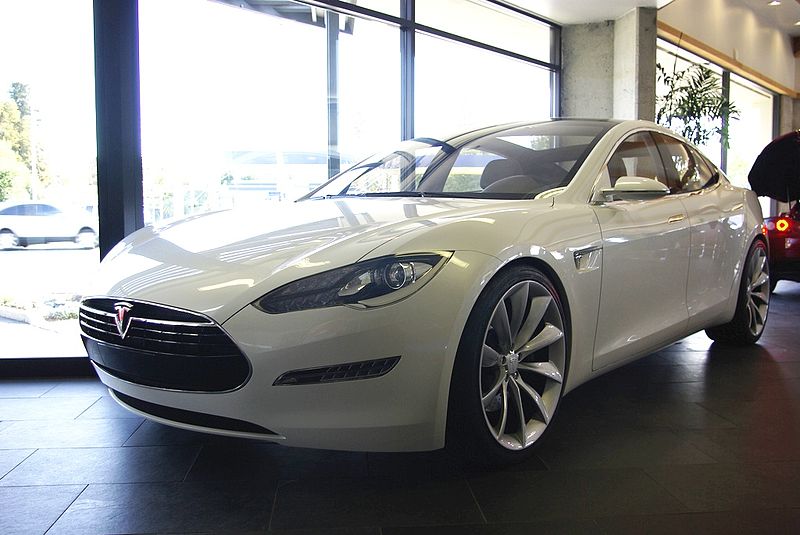Model S Sneak Peek: Alpha Drives
In Automobile The Tesla Model S is a full-sized battery electric sedan in development by Tesla Motors. It is an electric car that was codenamed WhiteStar during research and preliminary development. It was announced in a press release on June 30, 2008. The prototype vehicle was displayed at a press conference on March 26, 2009.
The Tesla Model S is a full-sized battery electric sedan in development by Tesla Motors. It is an electric car that was codenamed WhiteStar during research and preliminary development. It was announced in a press release on June 30, 2008. The prototype vehicle was displayed at a press conference on March 26, 2009.
Production for the retail market is expected to begin in mid 2012, with a base price of US$57,400. The base model will have a range of 160 miles (260 km) when fully charged, and a 0 to 60 mph (0 to 97 km/h) acceleration of 5.6 seconds. The premium Signature Series will have a larger battery pack available with ranges of 230 and 300 miles (370 and 480 km). The first 1,000 cars to be produced will be of the premium version. Normal charging times will be 3 to 5 hours, depending on the battery capacity, and a 45-minute QuickCharge will be possible when connected to a 480 V outlet. In addition, a battery swap will be possible in less than two minutes.
The Model S is being designed as a high performance electric sedan, competing with such cars as the BMW 5-series. This is primarily in order to justify the high costs of high density lithium ion batteries. This business model follows that of the high performance Tesla Roadster sports car, which has a base price of US$109,000 or €99,000.
Initial design was performed by Henrik Fisker, and later re-styled by Franz von Holzhausen who previously worked for Mazda North American Operations.
The chassis, body, motor and energy storage system are unique to Tesla Motors.
The Model S was featured on Late Show with David Letterman in April 2009. Because the car uses no gasoline whatsoever and does not produce any tailpipe emissions, it was allowed on the Late Show set and was the first fully functioning car on the stage.
Performance: Acceleration of the 3,825 pounds (1,735 kg) vehicle is anticipated to be 0–60 mph (97 km/h) in 5.6 seconds aided by a drag coefficient of 0.28.
Battery Packs: The base model will have a range of 160 miles (260 km) when fully charged using a 42 kW·h battery pack (24 kW·h/100 mi, 108 mpgge). Larger, longer range battery pack options will be available as well; the options announced include a range of 230 miles (370 km) from a 65 kW·h pack (26 kW·h/100 mi, 100 mpgge) and a range of 300 miles (480 km) from an 85 kW·h pack (26 kW·h/100 mi, 100 mpgge). The base battery pack will contain 5,000 lithium-ion cells, reported to be sourced from Panasonic, while the larger battery packs will both contain 8,000 cells and weigh approximately 1,200 pounds (540 kg). The largest pack will use the same number of cells, but each cell will have a 30% higher specific energy to enable the pack to store the additional energy. A 45-minute QuickCharge of the 42 kW·h pack will be possible when a 3-phase 480 volt, 100 amp circuit is available (80 amp continuous draw from a 100 amp breaker).
The Tesla Model S is expected to have a swappable battery, and will feature a 17 in (43 cm) touchscreen computer with in-car 3G connectivity, enabling access to online services, or to check the battery’s state of charge remotely.

